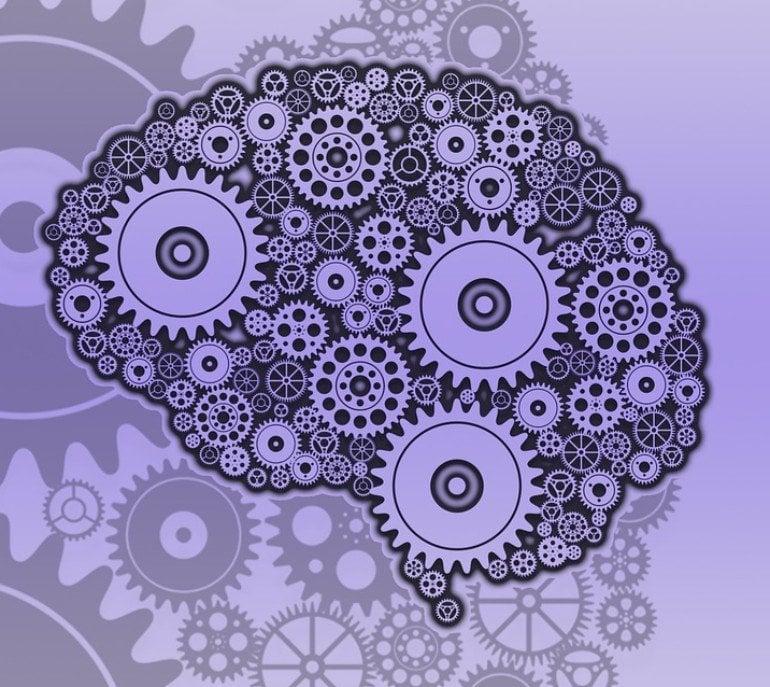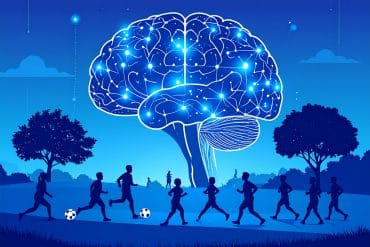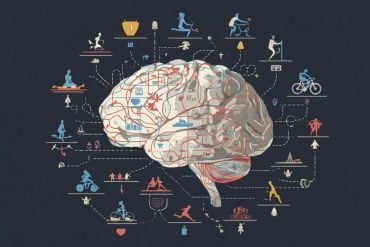Summary: A new theory suggests electromagnetic energy in the brain enables neurons and brain regions to create consciousness and our ability to critically think.
Source: University of Surrey
Electromagnetic energy in the brain enables brain matter to create our consciousness and our ability to be aware and think, according to a new theory developed by Professor Johnjoe McFadden from the University of Surrey.
Publishing his theory in the journal Neuroscience of Consciousness, Professor McFadden posits that consciousness is in fact the brain’s energy field. This theory could pave the way toward the development of conscious AI, with robots that are aware and have the ability to think becoming a reality.
Early theories on what our consciousness is and how it has been created tended toward the supernatural, suggesting that humans and probably other animals possess an immaterial soul that confers consciousness, thought and free will—capabilities that inanimate objects lack. Most scientists today have discarded this view, known as dualism, to embrace a ‘monistic’ view of a consciousness generated by the brain itself and its network of billions of nerves. By contrast, McFadden proposes a scientific form of dualism based on the difference between matter and energy, rather than matter and soul.
The theory is based on scientific fact: when neurons in the brain and nervous system fire, they not only send the familiar electrical signal down the wire-like nerve fibres, but they also send a pulse of electromagnetic energy into the surrounding tissue. Such energy is usually disregarded, yet it carries the same information as nerve firings, but as an immaterial wave of energy, rather than a flow of atoms in and out of the nerves.

This electromagnetic field is well-known and is routinely detected by brain-scanning techniques such as electroencephalogram (EEG) and magnetoencephalography (MEG) but has previously been dismissed as irrelevant to brain function. Instead, McFadden proposes that the brain’s information-rich electromagnetic field is in fact itself the seat of consciousness, driving ‘free will’ and voluntary actions.
This new theory also accounts for why, despite their immense complexity and ultra-fast operation, today’s computers have not exhibited the slightest spark of consciousness; however, with the right technical development, robots that are aware and can think for themselves could become a reality.
Johnjoe McFadden, Professor of Molecular Genetics and Director of the Quantum Biology Doctoral Training Centre at the University of Surrey, said: “How brain matter becomes aware and manages to think is a mystery that has been pondered by philosophers, theologians, mystics and ordinary people for millennia. I believe this mystery has now been solved, and that consciousness is the experience of nerves plugging into the brain’s self-generated electromagnetic field to drive what we call ‘free will’ and our voluntary actions.”
About this consciousness research news
Source: University of Surrey
Contact: Press Office – University of Surrey
Image: The image is in the public domain.
Original Research: Open access.
“Integrating information in the brain’s EM field: the cemi field theory of consciousness” by Johnjoe McFadden. Neuroscience of Consciousness
Abstract
Integrating information in the brain’s EM field: the cemi field theory of consciousness
A key aspect of consciousness is that it represents bound or integrated information, prompting an increasing conviction that the physical substrate of consciousness must be capable of encoding integrated information in the brain. However, as Ralph Landauer insisted, ‘information is physical’ so integrated information must be physically integrated. I argue here that nearly all examples of so-called ‘integrated information’, including neuronal information processing and conventional computing, are only temporally integrated in the sense that outputs are correlated with multiple inputs: the information integration is implemented in time, rather than space, and thereby cannot correspond to physically integrated information. I point out that only energy fields are capable of integrating information in space. I describe the conscious electromagnetic information (cemi) field theory which has proposed that consciousness is physically integrated, and causally active, information encoded in the brain’s global electromagnetic (EM) field. I here extend the theory to argue that consciousness implements algorithms in space, rather than time, within the brain’s EM field. I describe how the cemi field theory accounts for most observed features of consciousness and describe recent experimental support for the theory. I also describe several untested predictions of the theory and discuss its implications for the design of artificial consciousness. The cemi field theory proposes a scientific dualism that is rooted in the difference between matter and energy, rather than matter and spirit.







